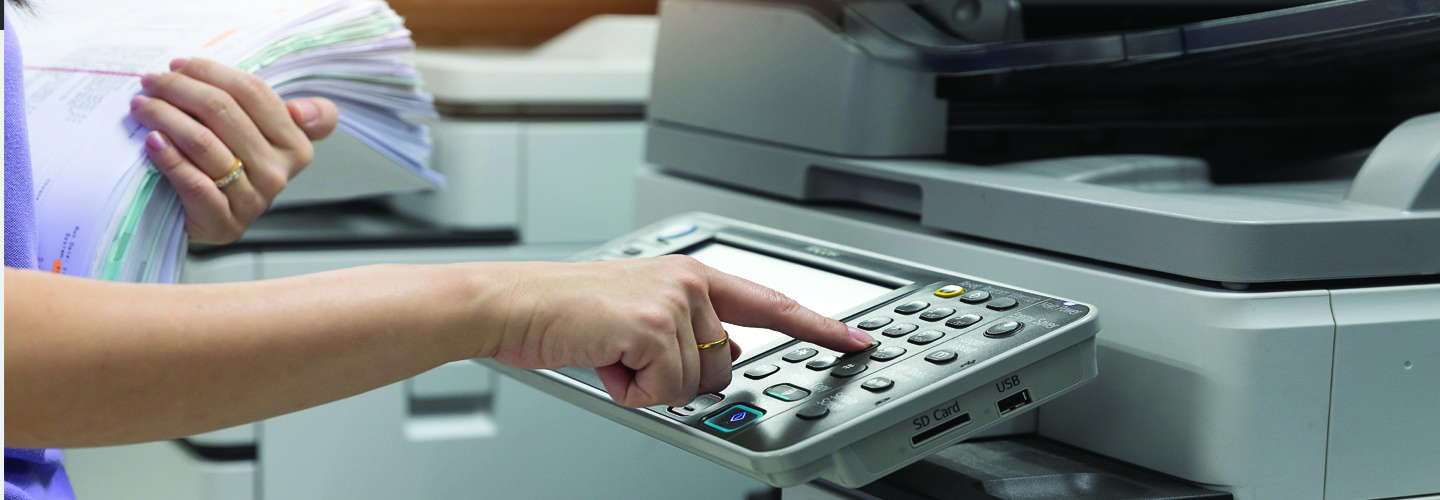Printers Still Have a Place in Financial Services
Many businesses are trying to move away from paper-based workflows, trying to save trees (and money) by pushing out information via PDFs and email rather than with booklets and memos.
This includes financial institutions, which have at times even offered their customers incentives (such as entering them into sweepstakes with large financial prizes) in exchange for moving to paperless statements.
But, as anyone who has recently completed mortgage documents can attest, paper still has a significant role to play in the financial services industry.
MORE FROM BIZTECH: Get tips on how to pick the right printer for a small business.
More Banks Will Increase Printing Than Will Cut Back
In research published this July, IDC explored print-based processes at U.S. banks and credit unions, with the goal of identifying printing and imaging opportunities available in the market. While most banks expect their print volume to stay flat in the near future, certain departments and workflows will experience increases.
Among IDC’s findings:
Most banks aren’t reducing their printing. The majority (52 percent) of U.S. banks and credit unions expect their print volume to stay the same over the next two years.
However, this hardly signals an overall decline in printing in financial services. The percentage of banks that anticipate increasing their print output (37 percent) is more than triple the percentage that anticipate a decrease (11 percent).
Among financial institutions that experienced a growth in print over the previous year, regulatory compliance was the top driver, with 38 percent of banks and credit unions citing it as a factor.
Customer-facing workflows produce the most print. Despite efforts to move customers away from paper, account statements are the top source of print volume for banks and credit unions, with 28 percent of institutions citing them as a key driver.
Other retail use cases also account for the next two spots, with financial institutions citing sales and marketing collateral and mailings with customer information, both at 26 percent, as the second and third key drivers. Internal process and procedure documents come in fourth, with 25 percent of financial institutions citing them as a key driver of print volume.
Faxed Material Remains Traceable and Easy to Use
Trends across workflows mirror the industry. Just as most banks and credit unions expect print volume to level off, print has been relatively flat across individual workflows such as new accounts, loan applications and marketing — with a plurality of institutions saying they’ve seen no change in print volumes in these workflows over the past year.
However, like the industry as a whole, most workflows have more people reporting an increase than reporting a decrease. For instance, 42 percent of banks and credit unions have seen no change in print for new accounts, while 29 percent have seen an increase, and 20 percent have seen a decrease; meanwhile, 9 percent say this workflow is entirely digital at their institution.
Use of fax will remain prevalent. While some organizations in other industries have largely replaced fax with email, fax is still in wide use across industries, and the financial sector continues to rely heavily on it. That isn’t expected to change in the near future.
The majority (59 percent) of banks and credit unions say that their fax use will be flat over the next two years, while 23 percent expect an increase, and just 18 percent anticipate a decrease.
Banks and credit unions give a variety of reasons for continuing to use the technology — including that faxes are traceable, that their organization has already invested in the technology and that faxes are ubiquitous and easy to use.









